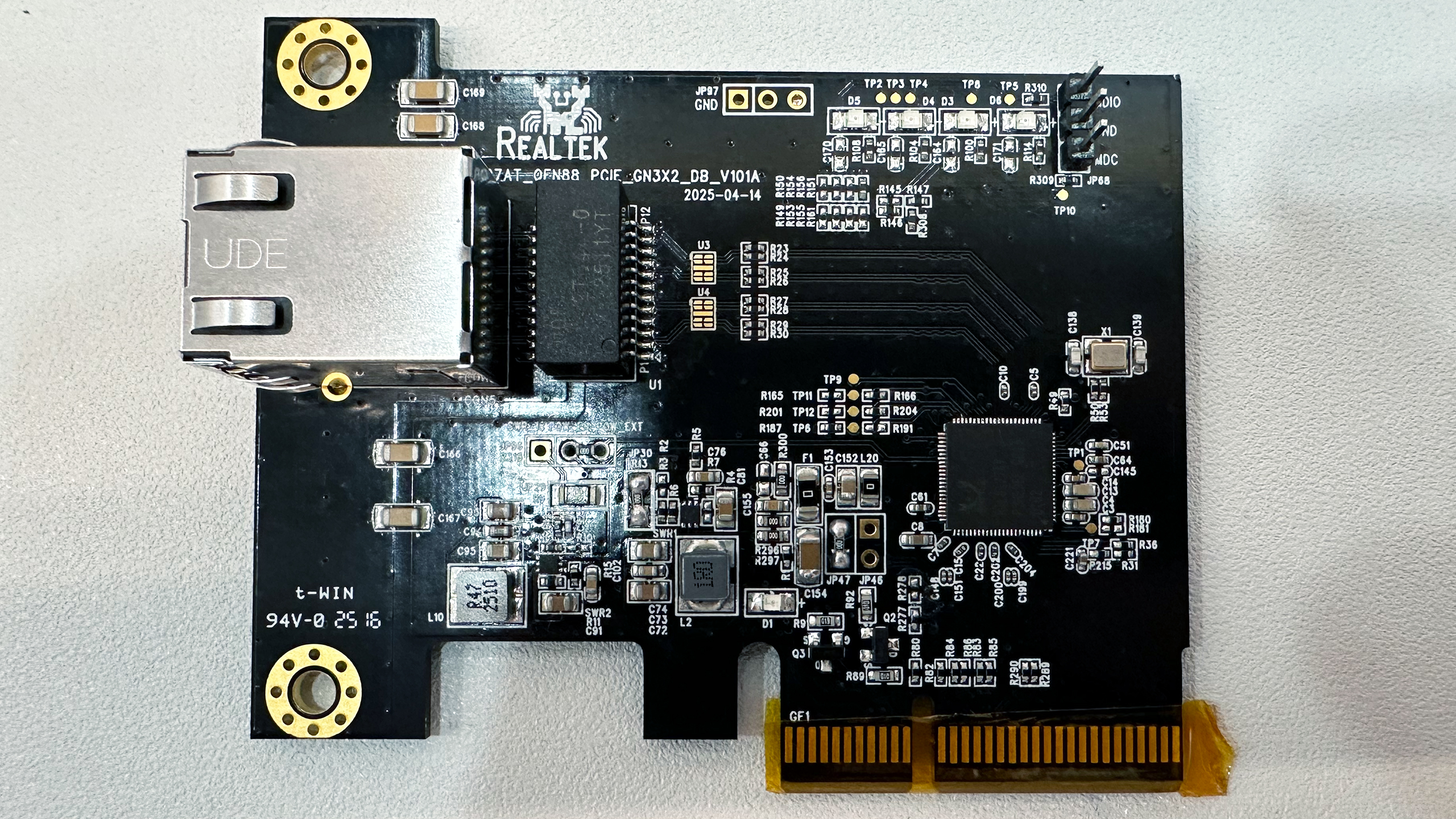Tough, Tiny, and Totally Repairable: Inside the Framework 12
-
What's the best way to order a print if you dont have a printer yourself? Is there a site you can order from?
Your regional library or local makerspace may have 3d printers you can print with.
-
I would look at Fair phone. I imported one to the US and I love it.
I bought a Fairphone 4 off Clove.co.uk and I live in Canada. After a year and a bit of enjoying that my wife agreed to replace her Pixel 4a with a Fairphone 5.
-
I just want an electric car that can do exactly this.
Modular components on an option of 3 frames. Reparable to a degree. Bare bones functionality. Physical buttons, no screens. Open source software. Upgrade not the whole car, but components as you go. Literally what video games taught us.
If I had Mark Cuban money, it's the first thing I would do.
The Slate truck looks interesting and is exactly what you describe. Time will tell if it pans out.
-
The Slate truck looks interesting and is exactly what you describe. Time will tell if it pans out.
It's not quite what I'm saying, but it's a starting point. It also isn't really a thing yet. They're expected to be available in 2027, so with EV incentives being eliminated, the now $27,500 basic model is already 30%+ more expensive before even appearing IRL.
-
Makes me sad that I know exactly what you mean, this new glass shit has me nervously eying the Linux door.
Linux Desktop has only got better in recent years. I made the switch to Ubuntu ~5 years back and have the opposite problem now - switching back to Windows/macOS can be a buggy pain.
Proprietary apps are still a pain for switching, but helped that most of the main ones (office) have capable web variants.
-
Makes me sad that I know exactly what you mean, this new glass shit has me nervously eying the Linux door.
Why's that? Never used apple devices myself, but I'm under the assumption that redesign is generally favored
-
Fellow Thunder user?
No, I use Eternity.
-
This post did not contain any content.
Got a Framework 12 and have all sorts of tiny annoying but somewhat manageable problems with it.
It used to overheat and then throttle to 400 Mhz every few seconds on high load. Overheating meaning 100°C. After a long time being annoyed and thinking "did I do something wrong" I reached out to support, and eventually got a new motherboard. It's better since then, but it still gets hot quickly. Also, if I just idle, like maybe a few Browser tabs and that's it, it will get somewhat warm ~65°C and I just don't get it.
For some reason, it sometimes does not find my hard drive on boot. Works the second or third attempt, and is no software problem.
The light detection thing has to be disabled in software to be able to use the brightness buttons.
At the start, my wifi sucked really bad, just on this device.
Having some more ports than just the audio jack and the extension cards would be neat too.
Also, it was really expensive.
So yeah, I sadly wouldn't buy it again, I think. The concept is really neat, but I've had too many annoying little problems. I still do use it as my main computer, and it works reasonably well, is light and well transportable, works with my docking station easily, etc, but those issues are annoying.
-
This post did not contain any content.
I had to double-take because I thought this was their 12th model. But no, they just suck at product versioning, like every other tech company.
-
Why's that? Never used apple devices myself, but I'm under the assumption that redesign is generally favored
So at one point Macs were the developer laptop. They gave a nice desktop experience but with UNIX underneath that was very close to the Linux servers you'd deploy on to.
The direction of travel has been to bring the UI closer and closer to touch devices, often at the detriment to the developer experience (IMO). Snow Leopard / Lion was Mac OS at it's best. Once we left the cats behind it started going wrong.
Intel has become Arm - moving things further from those deployment servers. I've come to the realisation that I actually need x86 Linux adjacency more than anything else and nothing does that better than x86 Linux.
-
I had to double-take because I thought this was their 12th model. But no, they just suck at product versioning, like every other tech company.
The number only indicate the screen size. The other two laptop models are the Framework 13 and 16. The only thing that made it confusing for you was your assumptions, since it all seems pretty straightforward to me.
-
So at one point Macs were the developer laptop. They gave a nice desktop experience but with UNIX underneath that was very close to the Linux servers you'd deploy on to.
The direction of travel has been to bring the UI closer and closer to touch devices, often at the detriment to the developer experience (IMO). Snow Leopard / Lion was Mac OS at it's best. Once we left the cats behind it started going wrong.
Intel has become Arm - moving things further from those deployment servers. I've come to the realisation that I actually need x86 Linux adjacency more than anything else and nothing does that better than x86 Linux.
Can you give some examples on how they're making it worse for developers? I've never used Mac OS before, so I got no clue what's different about it.
-
Intriguing, care to say more?
With out Bezo's name recognition very, very few would have heard about Slate and their little pickup/SUV. That's a level of advertisement that money simply can't buy as a startup. We certainly wouldn't be talking about them without Bezos' name being attached to them. And they certainly wouldn't have access to the investors and financial doors his name can easily open.
-
Hey, my client doesn't show that your comment contains anything, I think you're missing the exclamation mark before the link.
What in the godforsaken markdown parsing is this
-
Same with my 2017 Thinkpad.
If they release one with a TrackPoint and mouse buttons, I'll upgrade early.
Same; I simply can't use a laptop without mouse buttons.
-
Got a Framework 12 and have all sorts of tiny annoying but somewhat manageable problems with it.
It used to overheat and then throttle to 400 Mhz every few seconds on high load. Overheating meaning 100°C. After a long time being annoyed and thinking "did I do something wrong" I reached out to support, and eventually got a new motherboard. It's better since then, but it still gets hot quickly. Also, if I just idle, like maybe a few Browser tabs and that's it, it will get somewhat warm ~65°C and I just don't get it.
For some reason, it sometimes does not find my hard drive on boot. Works the second or third attempt, and is no software problem.
The light detection thing has to be disabled in software to be able to use the brightness buttons.
At the start, my wifi sucked really bad, just on this device.
Having some more ports than just the audio jack and the extension cards would be neat too.
Also, it was really expensive.
So yeah, I sadly wouldn't buy it again, I think. The concept is really neat, but I've had too many annoying little problems. I still do use it as my main computer, and it works reasonably well, is light and well transportable, works with my docking station easily, etc, but those issues are annoying.
I had a gaming laptop whose CPU jumped to 92C immediately on load, the vendor replaced the heatsink + copper wires to solve the problem, the cooling system might be problematic instead of the CPU / mobo
-
Same; I simply can't use a laptop without mouse buttons.
I have a Macbook Pro at work, and I honestly hate it, largely for this reason. Mouse button rock, and TrackPoint is good enough that I largely don't use the trackpad. My workflow is very keyboard-centric, so it's a really good fit.
Give me the same workflow and I'll become a Framework customer. Otherwise, I'll probably still get one, but only once my laptop is no longer functional.
-
This post did not contain any content.
The battery connector is amazing, not a ribbon cable in sight!
-
I had to double-take because I thought this was their 12th model. But no, they just suck at product versioning, like every other tech company.
I'm confused, do you have an example of a laptop that uses numbers for their model number iteration rather than their screen size or feature set?
-
The number only indicate the screen size. The other two laptop models are the Framework 13 and 16. The only thing that made it confusing for you was your assumptions, since it all seems pretty straightforward to me.
Yes i realised that after researching their product line. And there are currently 5 different 13's, and seemingly no easy way to differentiate revisions without listing the complete specs.
I just wish companies would make it easier to tell which of their products is newer/older.
Eg: 13" 2021, 16" 2022, etc..





